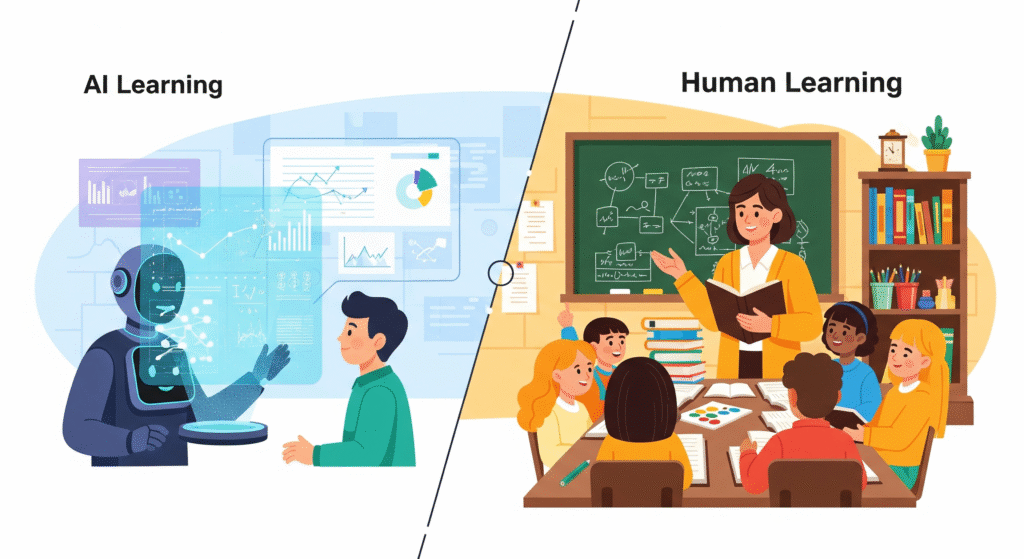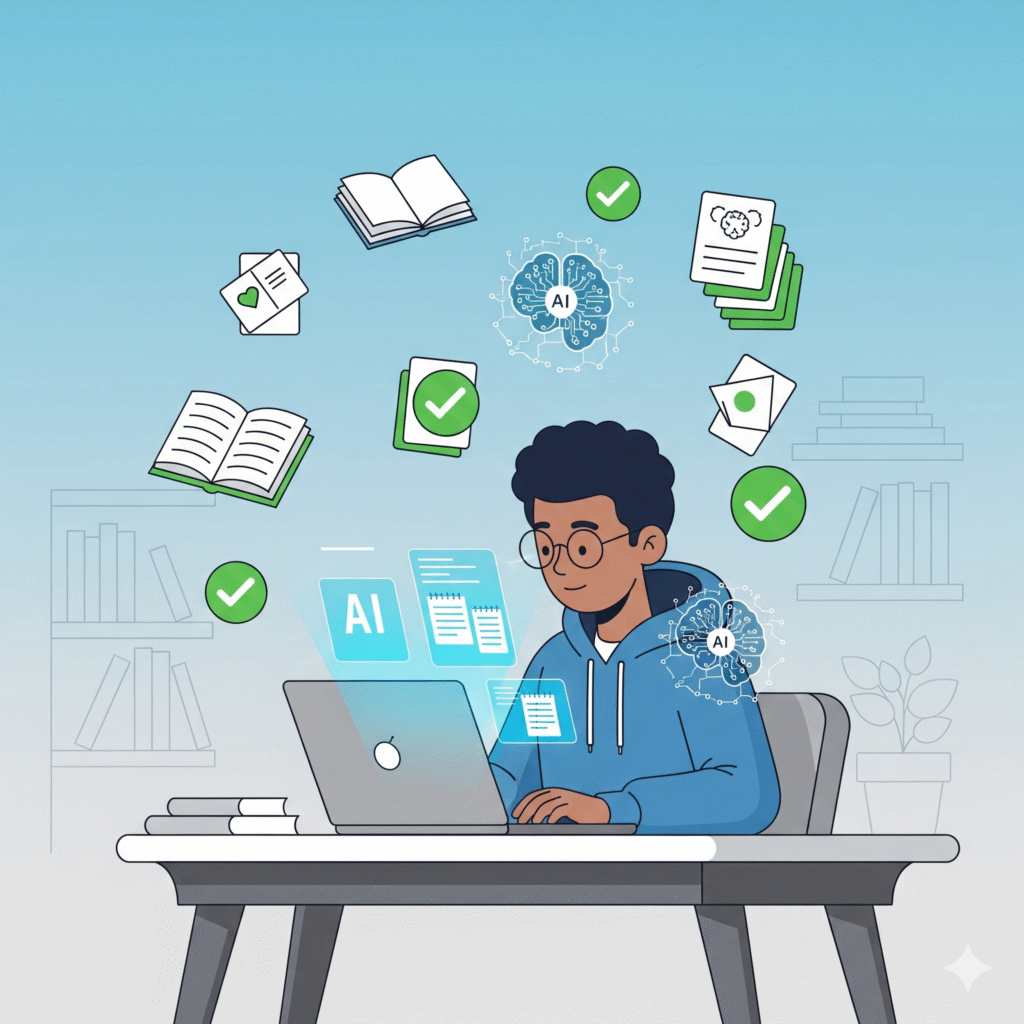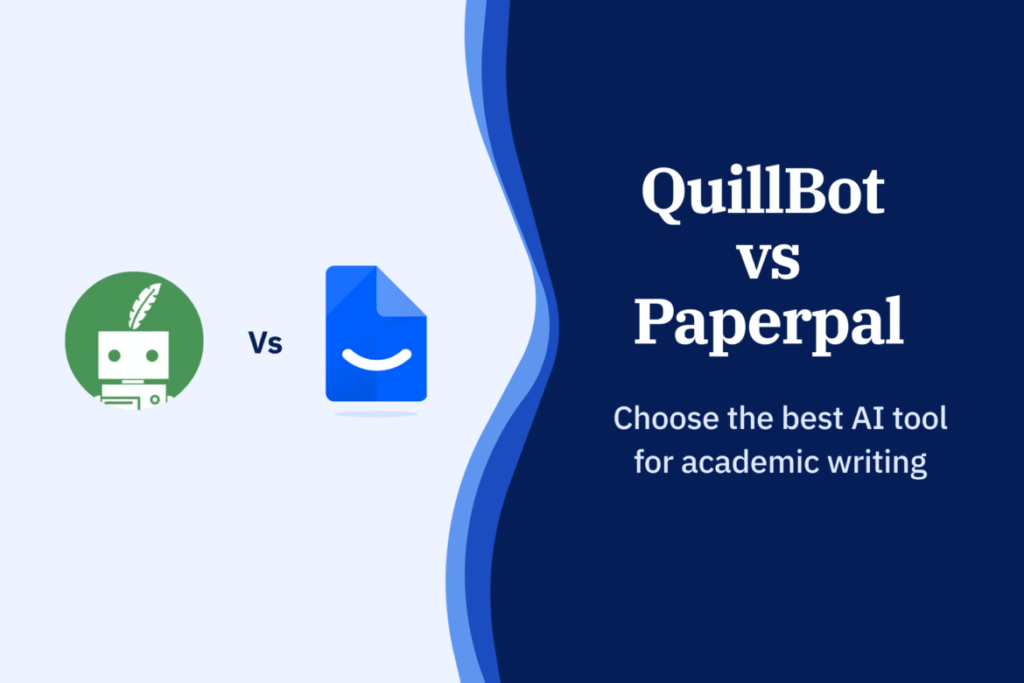Introduction
Artificial Intelligence (AI) has rapidly entered the education space, offering personalized study plans, instant grading, and even AI tutors that answer questions 24/7. But this raises a critical question: Can AI truly replace human teachers?
In this blog, we’ll break down the key differences between AI learning vs. human learning, explore the strengths and limitations of both, and analyze what the future of education may look like.
AI Learning: Strengths and Benefits
AI-powered learning tools are designed to process vast amounts of data and adapt instantly to each student’s needs. Some of the biggest advantages include:
- Personalized Learning Paths – AI can adjust lessons based on a student’s pace and performance.
- 24/7 Availability – Unlike humans, AI tutors never sleep.
- Instant Feedback – Students get immediate answers and corrections.
- Scalable Education – One AI system can serve millions of learners at the same time.
Popular AI learning tools like ChatGPT, QuillBot, and Paperpal are already helping students summarize notes, paraphrase content, and prepare study guides.
Human Learning: Why Teachers Still Matter
While AI has impressive capabilities, human teachers bring something AI cannot replicate:
- Emotional Intelligence – Teachers understand feelings, empathy, and motivation.
- Creativity & Inspiration – A teacher can spark curiosity beyond textbooks.
- Critical Thinking Development – Humans can encourage debate, ethics, and open-ended reasoning.
- Mentorship & Guidance – Beyond academics, teachers guide students in life skills.
Education is not just about memorization; it’s also about connection, values, and human growth, something AI lacks.
AI vs Human Learning: Side-by-Side Comparison
| Feature | AI Learning ✅ | Human Learning ✅ |
|---|---|---|
| Personalization | High (data-driven) | Moderate (limited to classroom size) |
| Availability | 24/7 | Limited by schedule |
| Emotional Support | ❌ None | ✅ Strong |
| Creativity | Limited | High |
| Scalability | Unlimited | Limited |
| Cost | Low (after setup) | High (salary, training) |
| Critical Thinking | Weak | Strong |
Can AI Replace Teachers?
The answer is: Not completely.
AI can assist teachers by handling repetitive tasks like grading, providing study materials, or answering simple queries. But for emotional support, mentorship, and deeper learning, human teachers remain irreplaceable.
The future of education likely lies in a hybrid model where AI supports teachers, giving them more time to focus on human interaction, creativity, and problem-solving.
FAQs
1. Will AI replace teachers in the future?
No, AI will support teachers, but human educators will always be needed for emotional and creative guidance.
2. What are examples of AI in education?
ChatGPT, Paperpal, QuillBot, and AI tutoring platforms like Khanmigo.
3. Is AI learning better than traditional learning?
AI is faster and more personalized, but traditional learning builds deeper critical thinking and human values.
Conclusion
AI vs Human Learning is not about replacement but about partnership. AI is a powerful tool that makes education smarter and more accessible, but the human touch of teachers remains at the heart of learning.
By combining both, we can create a future where education is not only efficient and scalable but also empathetic and meaningful.



